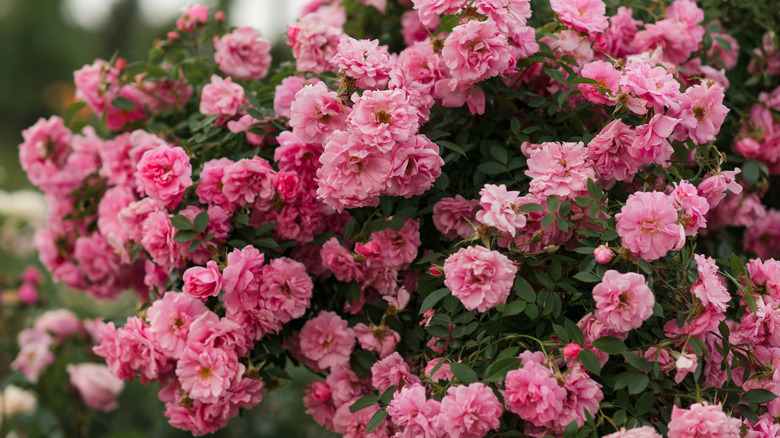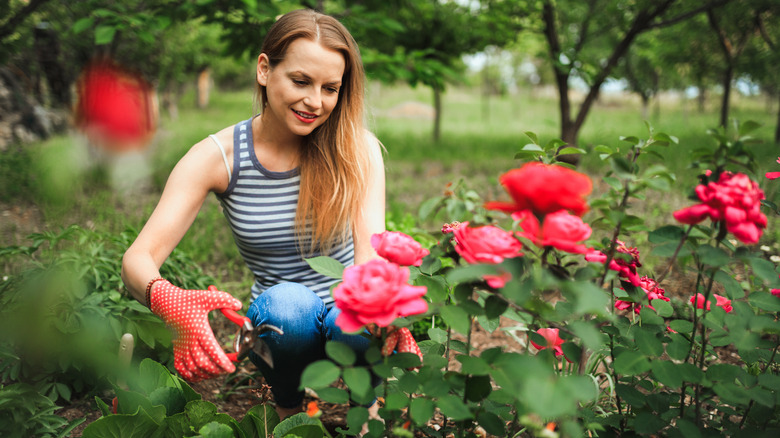Our Top Tips For Caring For Your Rose Bushes During The Fall
Roses are perennials that never leave your garden once planted, but as days grow shorter and the air turns colder, your rose bushes need extra care to survive the winter and bloom beautifully next spring. Without proper attention in the fall, your roses may struggle to withstand harsh winter conditions. Here are some essential tips for putting your rose bushes to bed in the fall and preparing them for the cold months ahead.
Though roses are one of those plants that you shouldn't prune in the fall, it is crucial to deadhead these flowers correctly before winter. Leave the heavy cleanup until spring, but in September or October, carefully clip the rotting parts of the plant off with pruners. While it may be tempting to pull them off by hand, doing so could create small wounds or tears in the stems — which serve as the perfect entry points for harmful fungi or pests.
Strong autumn winds can also damage long rose canes, snapping or breaking them. Trim your canes back to about four or five feet in length and loosely tie them together to minimize movement during winter storms. This step is crucial for climbing roses and in colder northern regions, where winter weather can be severe. You can even secure them to the ground with stakes, use a zip tie to keep your climbing plants in check, and cover them with burlap to provide insulation for the winter months.
Caring for the soil around your roses
Beyond tending to the plants themselves, it is crucial to care for the soil around your rose bushes in the fall, too. As summer comes to an end, stop fertilizing your rose bushes. Fertilizer encourages new growth, which is too tender to survive the cold winter. By stopping fertilization around late-August to early-September (whenever summer winds down in your area), you help your plants to transition into dormancy naturally. This allows them to harden for winter and reduces the risk of damage by frost.
Raking up and removing fallen leaves and garden debris is vital. This debris can carry fungal diseases that affect roses, increasing the chance of infection when spring arrives. Make sure to dispose of this debris and avoid composting it, as pathogens and disease can spread to other areas of your garden. A thick layer of mulch around the base of your rose bushes also provides insulation and adds nutrients to the soil. In most geographic areas, a 2-3 inch mulch layer is enough, but colder zones may require as much as 8-12 inches for adequate protection. Pay special attention to the graft union — the point where the rose is grafted onto its rootstock — as this part of the rose bush is especially prone to winter injury.
In regions with particularly cold winters, mounding compost around the bottom of your roses can further protect your roses from freeze-thaw cycles. Repeated freezing and thawing can heave the soil and disrupt the roots of your plants. So, the added insulation of compost can stabilize the soil temperature, protecting your roses from the stress of fluctuating conditions.

